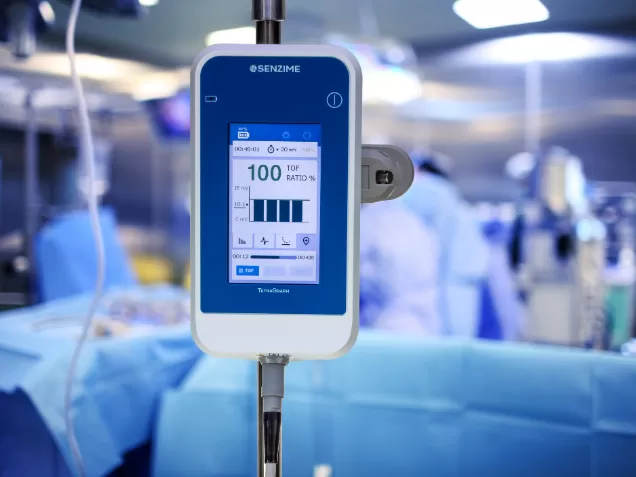Implementing TetraGraph, Quantitative Train-of-Four (TOF) Monitor
Laying the Foundation for Success
June 20, 2024
by Erik Wroblewski, Anesthesia Manager at Froedtert & the Medical College of Wisconsin, US.

Successfully integrating TetraGraph into a healthcare facility requires a collaborative strategy to ensure seamless integration and optimal functionality.
Step 1: Stakeholder Identification and Involvement
The installation process begins before the product ever arrives at the facility. Start by identifying key stakeholders and including all relevant personnel in the initial planning process. Essential stakeholders include IT, biomedical engineering, clinical leadership, product champions, and administrative personnel managing the project.
Step 2: Develop Protocol for Monitoring and Antagonism of Neuromuscular Blockade
Have clinical leadership create a dosing and quantitative monitoring protocol for staff. Practice guidelines are crucial to quality healthcare and provide a clear standard for clinicians to follow. Developing a protocol before installation is key to driving meaningful adoption and increasing patient safety.
Step 3: Super User Selection and Training
Select and designate super users within your clinical team who will become the facility experts on the TetraGraph system. These individuals are responsible for assisting their colleagues with post-implementation support. Super users should be chosen based on their technical aptitude, willingness to learn, and ability to promote the system’s adoption among peers.
Step 4: Technical Coordination
Coordinate with IT and biomedical teams to understand the specific technical needs of the TetraGraph monitors, such as power supply and network integration. IT staff should ensure that the monitors can efficiently connect with the facility’s existing electronic health record (EHR) data systems, like EPIC. Biomedical teams should be familiar with the hardware's physical setup, maintenance, and potential troubleshooting.
Step 5: Communication and Support
Establish support channels. This includes open communication between TetraGraph representatives and the facility’s super users to create a responsive feedback loop for swiftly addressing any issues. Utilize Senzime’s quick reference guides and educational materials to empower staff to handle common challenges independently.
By following these steps and establishing a solid foundation through collaborative preparation, implementing TetraGraph can be simple and effective, ultimately enhancing patient care and operational efficiency.
Erik Wroblewski
Anesthesia Manager, Froedtert & the Medical College of Wisconsin

Get started by contacting Senzime to talk to a sales representative or request a complimentary demo.

Powered by 5th generation electromyography (EMG) algorithm, TetraGraph provides precision in quantitative train-of-four monitoring.
